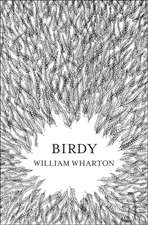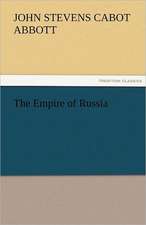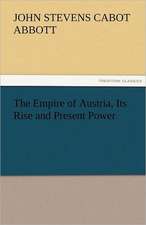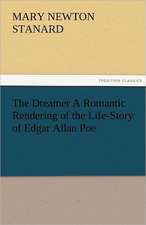The Hunchback of Notre-Dame
Autor Victor Hugo Graham Robb Traducere de Walter J. Cobben Limba Engleză Paperback – 28 feb 2010 – vârsta de la 18 ani
The setting of this extraordinary historical novel is medieval Paris: a city of vividly intermingled beauty and ugliness, surging with violent life under the two towers of its greatest structure and supreme symbol, the cathedral of Notre Dame.
Against this background, Victor Hugo unfolds the haunting drama of Quasimodo, the hunchback; Esmeralda, the gypsy dancer; and Claude Frollo, the priest tortured by the specter of his own damnation. Shaped by a profound sense of tragic irony, it is a work that gives full play to the author's brilliant imagination and his remarkable powers of description.
Translated By Walter J. Cobb
With an Introduction by Bradley Stephens
And an Afterword by Graham Robb
| Toate formatele și edițiile | Preț | Express |
|---|---|---|
| Paperback (6) | 25.58 lei 3-5 săpt. | +15.28 lei 7-13 zile |
| HarperCollins Publishers – 30 sep 2011 | 25.58 lei 3-5 săpt. | +15.28 lei 7-13 zile |
| Signet Classics – 28 feb 2010 | 39.55 lei 3-5 săpt. | |
| Pan Macmillan – 8 oct 2024 | 45.89 lei 3-5 săpt. | +33.08 lei 7-13 zile |
| Mint Editions – 31 oct 2020 | 111.12 lei 3-5 săpt. | +22.60 lei 7-13 zile |
| – | 125.48 lei 3-5 săpt. | |
| Rupa Publications India Pvt Ltd. – 4 iun 2023 | 76.47 lei 6-8 săpt. | |
| Hardback (4) | 50.21 lei 3-5 săpt. | +35.96 lei 7-13 zile |
| Pan Macmillan – 18 iul 2016 | 50.21 lei 3-5 săpt. | +35.96 lei 7-13 zile |
| Random House – 30 mar 2012 | 95.11 lei 26-32 zile | +40.29 lei 7-13 zile |
| Everyman's Library – 31 ian 2012 | 181.90 lei 3-5 săpt. | |
| Mint Editions – 26 mai 2021 | 194.84 lei 3-5 săpt. |
Preț: 39.55 lei
Nou
Puncte Express: 59
Preț estimativ în valută:
7.57€ • 7.90$ • 6.26£
7.57€ • 7.90$ • 6.26£
Carte disponibilă
Livrare economică 15-29 martie
Preluare comenzi: 021 569.72.76
Specificații
ISBN-13: 9780451531513
ISBN-10: 0451531515
Pagini: 510
Dimensiuni: 104 x 170 x 36 mm
Greutate: 0.25 kg
Editura: Signet Classics
ISBN-10: 0451531515
Pagini: 510
Dimensiuni: 104 x 170 x 36 mm
Greutate: 0.25 kg
Editura: Signet Classics
Notă biografică
Born in 1802, the son of a high officer in Napoleon’s army, Victor Hugo spent his childhood against a background of military life in Elba, Corsica, Naples, and Madrid. After the Napoleonic defeat, the Hugo family settled in straitened circumstances in Paris, where, at the age of fifteen, Victor Hugo commenced his literary career with a poem submitted to a contest sponsored by the Académie Française. Twenty-four years later, Hugo was elected to the Académie, having helped revolutionize French literature with his poems, plays, and novels. Entering politics, he won a seat in the National Assembly in 1848; but in 1851, he was forced to flee the country because of his opposition to Louis Napoleon. In exile on the Isle of Guernsey, he became a symbol of French resistance to tyranny; upon his return to Paris after the Revolution of 1870, he was greeted as a national hero. He continued to serve in public life and to write with unabated vigor until his death in 1885. He was buried in the Pantheon with every honor the French nation could bestow.
Descriere
Here is the haunting drama of Quasimodo, the hunchback; Esmeralda, the gypsy dancer; and Claude Frollo, the priest tortured by his own damnation. Shaped by a profound sense of tragic irony, the work gives full play to the author's brilliant imagination. Revised reissue.
Extras
From the Introduction
True, there is something strange and marvellous in the talent of this man who sweeps the reader before him as the wind sweeps the leaf, who leads him at will through every place and era; unveils before him as if it were child’s play the heart’s innermost recesses, the most mysterious phenomena of nature and the most obscure pages of history; whose imagination dominates and embraces every other imagination, clothing itself with the same astonishing truth in the rags of the beggar and the robes of the king, taking on every attitude, adopting every garb, speaking every language; leaving to the physiognomy of the centuries whatever in their features the wisdom of God has rendered eternal and immutable and whatever the folly of humanity in its ephemeral variety has cast upon them; who does not, as some ignorant novelists do, deck the protagonists of yesteryear in our face-paint nor daub them with the gloss of today, but forces the contemporary reader, under the thrall of his magical powers, to re-assume for the space of a few hours the spirit of olden times ߝ a spirit held in such low esteem today ߝ like a wise and tactful adviser inviting the ingrate son to return to his father’s house.
Despite appearances, this epic sentence was not written to greet Notre-Dame de Paris (The Hunchback of Notre-Dame) on its publication in March 1831. It formed the opening of an article written eight years earlier for the launch of La muse française, a journal founded by Hugo and his Romantic friends ߝ a circle of sentimental young royalists infatuated with the Middle Ages. Hugo had chosen the ‘Literary Criticism’ section for his first contribution. Only twenty-one, he was already very familiar with the work of the man whose ‘magical powers’ he so splendidly evoked: Walter Scott, thirty years his elder, whose Quentin Durward had just appeared in French.
Hugo eulogized Scott. That same year, Stendhal noted ‘the French are mad about Walter Scott’. Balzac shared this enthusiasm. But Hugo alone of these admirers devoted an entire essay to Scott ߝ he did the same for William Shakespeare forty years later. He seemed to speak most freely of himself when wearing an English mask. For Hugo, literary criticism was an essential first step in his creative life. His review of Quentin Durward laid the foundations for the notorious preface to Cromwell (yet another English mask): this was effectively the manifesto of French Romanticism (1827). Theatre then dominated the other genres as cinema does today and Hugo praised Scott for freeing his work from the trammels of the ‘narrative’ and ‘epistolary’ novel in order to create the ‘dramatic novel, in which the imaginary action unfolds in truthful and varied tableaux, just like the events of real life’. The novel, Hugo announced, should be like life: ‘And is not life a strange drama in which the good and the bad, the beautiful and the ugly, the sublime and the base are intermingled according to a law whose power ends only with the created world?’ This question, which challenges the separation of genres found in classical French plays and favours a more Shakespearian approach, reappears in almost identical form in the preface to Cromwell. In short, the novel must borrow its principles of composition from drama.
The Hunchback of Notre-Dame does in fact display remarkable unity of time and place, as required by the often forgotten subtitle (Notre-Dame de Paris. 1482) but is no less remarkable for its unity of action. In these respects, it faithfully followed the principles set out by Hugo in La muse française. As to the intermingling of genres ߝ Hugo’s key demand in his manifesto ߝ we find it everywhere in The Hunchback. Indeed some have diagnosed an obsession with antitheses. These are present from the first page, which mixes the Epiphany of the Wise Men with the Feast of the Fools, to the last, which brings together Esmeralda and Quasimodo (Beauty and the Beast) for that rather peculiar wedding night ߝ described by Graham Robb in his superlative biography of Hugo as a ‘parody of a happy ending’. Nor should we forget the antithesis constituted by those two considerable personages, the ‘supreme suzerain of the Realm of Argot’ and the King of France, namely Clopin Trouillefou and Louis XI.
Hugo had nevertheless slipped an astonishing remark into his critique of Quentin Durward, which he wisely removed when the essay was republished in 1834:
As Frenchmen, we do not thank Sir Walter for his incursion into our history; indeed we are somewhat inclined to reproach the Scotsman for it. True, the man who, setting aside Charlemagne, Philippe-Auguste, Saint Louis, Louis XII, François I, Henri IV and Louis XIV, selected from all our kings the figure of Louis XI, must necessarily be a foreigner. This is truly the inspiration of an English Muse.
Five years later, Louis XI with his archers and iron cages occupied the foreground of The Hunchback of Notre-Dame. Against all expectation, here was the origin of the book. In so far as we can decipher Hugo’s notes, it had first been intended as a theatre piece on the death of Louis XI; the outline of this draft followed Quentin Durward quite closely. The English muse thus seemed to wipe the floor with La muse française, which (in the form of that journal) had long since retired from the scene. True to his habits, Hugo entirely surpassed his model. In Swinburne’s famous and telling analogy, Walter Scott’s portrayal of Louis XI looked, beside Hugo’s, like a Van Dyck portrait alongside one by Velásquez. ‘The style was a new revelation of the supreme capacities of human speech,’ Swinburne added, and ‘the touch of it on any subject of description or of passion is as the touch of the sun for penetrating irradiation and vivid evocation of life.’
When in late October 1828, Charles Gosselin, the French publisher of Quentin Durward, contacted Hugo, his principal motivation was, he said, the resemblance he detected between Hugo and Scott. Was this a subtle hint or something that had struck Gosselin while reading Hugo’s novel of 1823, Han d’Islande? In either case, Hugo was receptive to the suggestion: he now had a large household to feed ߝ a wife and three children along with two domestics ߝ and unlike most of his author friends, he had no resource but his pen. On 15 November 1828, he signed a contract with Gosselin for his complete works ߝ at the age of twenty-six ߝ including a two-volume novel to be delivered in six months’ time, The Hunchback of Notre-Dame. This ‘historical novel’ was announced as nearly complete. In fact, it consisted of two pages of prose and fifty lines of telegraphic notes scribbled down between two poems.
Six months later, when Hugo was expected to submit his manuscript, the novel was no further advanced. But Hugo spared no pains to disguise the fact. In the preface to his book of poems Les Orientales, published by Gosselin in January 1829, he span a long metaphor comparing his work with a medieval city in which the ‘old gallows’ stood in the background and ‘at its centre, the great Gothic cathedral’. His critics would, he said, ‘find him reckless and foolish to desire for France a literature that [could] be compared to a medieval town. No madder fantasy could be entertained; it [meant] actively seeking disorder, profusion, bad taste and the bizarre.’ These were not qualities much appreciated in the land of Racine and Voltaire. But it is sometimes forgotten that this was also the land of Corneille and Rabelais, and Hugo openly drew on Rabelais for inspiration. It was from the top of the towers of Notre-Dame that Gargantua’s stream of urine drowned 260,418 Parisians ‘besides the women and children’; Quasimodo sent ‘two jets of molten lead’ from the very same towers to similar effect on the cathedral’s beggar-assailants. But as the historian Michelet remarked, Quasimodo’s tenancy of Notre-Dame wholly eclipsed Gargantua’s:
Someone has marked this monument with so powerful a hand that no one will ever again dare to touch it. From now on it is his object, his fief; it is Quasimodo’s entailed property. Next to the old cathedral he built a cathedral of poetry and its foundations are as solid and its towers as high as those of the original.
True, there is something strange and marvellous in the talent of this man who sweeps the reader before him as the wind sweeps the leaf, who leads him at will through every place and era; unveils before him as if it were child’s play the heart’s innermost recesses, the most mysterious phenomena of nature and the most obscure pages of history; whose imagination dominates and embraces every other imagination, clothing itself with the same astonishing truth in the rags of the beggar and the robes of the king, taking on every attitude, adopting every garb, speaking every language; leaving to the physiognomy of the centuries whatever in their features the wisdom of God has rendered eternal and immutable and whatever the folly of humanity in its ephemeral variety has cast upon them; who does not, as some ignorant novelists do, deck the protagonists of yesteryear in our face-paint nor daub them with the gloss of today, but forces the contemporary reader, under the thrall of his magical powers, to re-assume for the space of a few hours the spirit of olden times ߝ a spirit held in such low esteem today ߝ like a wise and tactful adviser inviting the ingrate son to return to his father’s house.
Despite appearances, this epic sentence was not written to greet Notre-Dame de Paris (The Hunchback of Notre-Dame) on its publication in March 1831. It formed the opening of an article written eight years earlier for the launch of La muse française, a journal founded by Hugo and his Romantic friends ߝ a circle of sentimental young royalists infatuated with the Middle Ages. Hugo had chosen the ‘Literary Criticism’ section for his first contribution. Only twenty-one, he was already very familiar with the work of the man whose ‘magical powers’ he so splendidly evoked: Walter Scott, thirty years his elder, whose Quentin Durward had just appeared in French.
Hugo eulogized Scott. That same year, Stendhal noted ‘the French are mad about Walter Scott’. Balzac shared this enthusiasm. But Hugo alone of these admirers devoted an entire essay to Scott ߝ he did the same for William Shakespeare forty years later. He seemed to speak most freely of himself when wearing an English mask. For Hugo, literary criticism was an essential first step in his creative life. His review of Quentin Durward laid the foundations for the notorious preface to Cromwell (yet another English mask): this was effectively the manifesto of French Romanticism (1827). Theatre then dominated the other genres as cinema does today and Hugo praised Scott for freeing his work from the trammels of the ‘narrative’ and ‘epistolary’ novel in order to create the ‘dramatic novel, in which the imaginary action unfolds in truthful and varied tableaux, just like the events of real life’. The novel, Hugo announced, should be like life: ‘And is not life a strange drama in which the good and the bad, the beautiful and the ugly, the sublime and the base are intermingled according to a law whose power ends only with the created world?’ This question, which challenges the separation of genres found in classical French plays and favours a more Shakespearian approach, reappears in almost identical form in the preface to Cromwell. In short, the novel must borrow its principles of composition from drama.
The Hunchback of Notre-Dame does in fact display remarkable unity of time and place, as required by the often forgotten subtitle (Notre-Dame de Paris. 1482) but is no less remarkable for its unity of action. In these respects, it faithfully followed the principles set out by Hugo in La muse française. As to the intermingling of genres ߝ Hugo’s key demand in his manifesto ߝ we find it everywhere in The Hunchback. Indeed some have diagnosed an obsession with antitheses. These are present from the first page, which mixes the Epiphany of the Wise Men with the Feast of the Fools, to the last, which brings together Esmeralda and Quasimodo (Beauty and the Beast) for that rather peculiar wedding night ߝ described by Graham Robb in his superlative biography of Hugo as a ‘parody of a happy ending’. Nor should we forget the antithesis constituted by those two considerable personages, the ‘supreme suzerain of the Realm of Argot’ and the King of France, namely Clopin Trouillefou and Louis XI.
Hugo had nevertheless slipped an astonishing remark into his critique of Quentin Durward, which he wisely removed when the essay was republished in 1834:
As Frenchmen, we do not thank Sir Walter for his incursion into our history; indeed we are somewhat inclined to reproach the Scotsman for it. True, the man who, setting aside Charlemagne, Philippe-Auguste, Saint Louis, Louis XII, François I, Henri IV and Louis XIV, selected from all our kings the figure of Louis XI, must necessarily be a foreigner. This is truly the inspiration of an English Muse.
Five years later, Louis XI with his archers and iron cages occupied the foreground of The Hunchback of Notre-Dame. Against all expectation, here was the origin of the book. In so far as we can decipher Hugo’s notes, it had first been intended as a theatre piece on the death of Louis XI; the outline of this draft followed Quentin Durward quite closely. The English muse thus seemed to wipe the floor with La muse française, which (in the form of that journal) had long since retired from the scene. True to his habits, Hugo entirely surpassed his model. In Swinburne’s famous and telling analogy, Walter Scott’s portrayal of Louis XI looked, beside Hugo’s, like a Van Dyck portrait alongside one by Velásquez. ‘The style was a new revelation of the supreme capacities of human speech,’ Swinburne added, and ‘the touch of it on any subject of description or of passion is as the touch of the sun for penetrating irradiation and vivid evocation of life.’
When in late October 1828, Charles Gosselin, the French publisher of Quentin Durward, contacted Hugo, his principal motivation was, he said, the resemblance he detected between Hugo and Scott. Was this a subtle hint or something that had struck Gosselin while reading Hugo’s novel of 1823, Han d’Islande? In either case, Hugo was receptive to the suggestion: he now had a large household to feed ߝ a wife and three children along with two domestics ߝ and unlike most of his author friends, he had no resource but his pen. On 15 November 1828, he signed a contract with Gosselin for his complete works ߝ at the age of twenty-six ߝ including a two-volume novel to be delivered in six months’ time, The Hunchback of Notre-Dame. This ‘historical novel’ was announced as nearly complete. In fact, it consisted of two pages of prose and fifty lines of telegraphic notes scribbled down between two poems.
Six months later, when Hugo was expected to submit his manuscript, the novel was no further advanced. But Hugo spared no pains to disguise the fact. In the preface to his book of poems Les Orientales, published by Gosselin in January 1829, he span a long metaphor comparing his work with a medieval city in which the ‘old gallows’ stood in the background and ‘at its centre, the great Gothic cathedral’. His critics would, he said, ‘find him reckless and foolish to desire for France a literature that [could] be compared to a medieval town. No madder fantasy could be entertained; it [meant] actively seeking disorder, profusion, bad taste and the bizarre.’ These were not qualities much appreciated in the land of Racine and Voltaire. But it is sometimes forgotten that this was also the land of Corneille and Rabelais, and Hugo openly drew on Rabelais for inspiration. It was from the top of the towers of Notre-Dame that Gargantua’s stream of urine drowned 260,418 Parisians ‘besides the women and children’; Quasimodo sent ‘two jets of molten lead’ from the very same towers to similar effect on the cathedral’s beggar-assailants. But as the historian Michelet remarked, Quasimodo’s tenancy of Notre-Dame wholly eclipsed Gargantua’s:
Someone has marked this monument with so powerful a hand that no one will ever again dare to touch it. From now on it is his object, his fief; it is Quasimodo’s entailed property. Next to the old cathedral he built a cathedral of poetry and its foundations are as solid and its towers as high as those of the original.
Recenzii
“What a beautiful thing Notre-Dame is!” —Gustave Flaubert

















